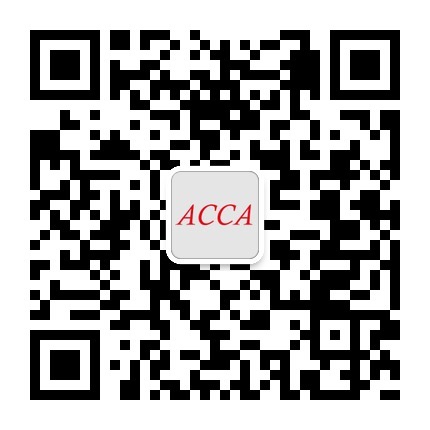





1、凡本网站注明“来源高顿教育”或“来源高顿网校”或“来源高顿”,的所有作品,均为本网站合法拥有版权的作品,未经本网站授权,任何媒体、网站、个人不得转载、链接、转帖或以其他方式使用。
2、经本网站合法授权的,应在授权范围内使用,且使用时必须注明“来源高顿网校”或“来源高顿”,并不得对作品中出现的“高顿”字样进行删减、替换等。违反上述声明者,本网站将依法追究其法律责任。
3、本网站的部分资料转载自互联网,均尽力标明作者和出处。本网站转载的目的在于传递更多信息,并不意味着赞同其观点或证实其描述,本网站不对其真实性负责。
4、如您认为本网站刊载作品涉及版权等问题,请与本网站联系(邮箱fawu@gaodun.com,电话:021-31587497),本网站核实确认后会尽快予以处理。
盐城ACCA培训机构,高顿ACCA要不要报?重要提示,报前必看!很多同学想报考ACCA,这项证书是在国际上具有一定知名度的财会类证书,ACCA学姐就带大家来详...
2023-07-04绵阳ACCA培训课程,高顿ACCA值得报吗?重点分析,小编介绍!很多同学想报考ACCA,这项证书是很多同学想尝试财会行业都会选择的,学姐现在就带大家来深...
2023-07-04莆田ACCA培训推荐,高顿ACCA要不要报?你知道吗?一文带你了解!很多同学想报考ACCA,这项证书是深受大多数财会从业者喜爱的证书,ACCA小编就带大家来详...
2023-07-03昆山ACCA培训班,高顿ACCA培训介绍?重要提醒,想报名的必读!很多同学想报考ACCA,这项证书是财会领域比较知名的一项资格认证,学姐今天就带大家来来...
2023-07-03会计专业有哪些证书大学可以考?证书报考条件及获取指南一览!对于财会专业的同学们来说,考证是能带来的就业优势和帮助都是比较多的,很多同学都...
2023-07-03高顿ACCA为银川的同学们提供培训,关于ACCA这项证书目前吸引了越来越多的人才加入其中,财务会计领域ACCA是很多人的选择,并且获得ACCA证书已成为众多从...
2023-07-03高顿ACCA为扬州的同学们提供培训,关于ACCA这项证书目前也吸引了很多同学来报名,ACCA证书是财务会计领域的认证,并且因此获得该证书的人数也在逐年增...
2023-07-03高顿ACCA为襄阳的同学们提供培训,关于ACCA这项证书目前吸引了大量人才报考,ACAC证书的价值得到了广泛认可,并且越来越多的人开始意识到ACCA证书的重要...
2023-07-03高顿ACCA为南通的同学们提供培训,关于ACCA这项证书目前是很多同学的选择,ACAC证书的认可度越来越高,并且因此获得该证书的人数也在逐年上升。但在南...
2023-07-0363题E选项为何不选啊!持有公司发行股份5%前五名股东单位任职人员不能担任,10%已经大于5%不是应该能担任吗?如果不能担任,范围是多少
资本公积的计算过程不理解
B为什么不对呢
老师:可以分别和我说一下: 1.非货币性资产交换:双方的入账价值和差额怎么确认吗 2.债务重组的:双方入账价值和差额分别怎么确认 3.长期股权投资:初始投资成本,初始入账价值 这几个概念经常弄晕
77题C选项不是应该1%,为什么C正确
63题E选项为何不选啊!持有公司发行股份5%前五名股东单位任职人员不能担任,10%已经大于5%不是应该能担任吗?如果不能担任,范围是多少
资本公积的计算过程不理解
B为什么不对呢
老师:可以分别和我说一下: 1.非货币性资产交换:双方的入账价值和差额怎么确认吗 2.债务重组的:双方入账价值和差额分别怎么确认 3.长期股权投资:初始投资成本,初始入账价值 这几个概念经常弄晕
77题C选项不是应该1%,为什么C正确
F5《业绩管理》是F2《管理会计》的后续课程,同时也帮助考生建了P5《高级业绩管理》的学习基础。这个一个承上启下的课程,所以还需要学生重点掌握。 1科目总结 考纲基本内容: 1)大纲首先介绍了更多的专业成本会计的内容,这些内容是F2(管理会计)已经涉及的。这里复习的目的是使得考生在学习.........
2018-02-27ACCA(特许公认会计师公会)近日公布了其专业资格的重大创新,将取消P1和P3科目,并引入新的科目SBL Strategic Business Leader《战略企业[*{b}*]》,新科目将在2018年9月考试中出现。针对这一变革,高顿财经ACCA研究中心的老师*9时间对新科目做了独到细致的解读,并与现行的P1、P3科目做了详细的对比分析,供广大.........
2016-10-17From the perspective of someone who has taught F4 paper, and its predecessor papers for 12 years, the 2 main reasons why students dont pass this paper can be summarised as: Lack of knowledge An inability to apply knowledge to questions This article will aim to tackle each of these with some practical advice from myself, and some of the thoughts of your examiner. Knowledge of the principles of law .........
2016-03-29今天高顿网校小编为大家整理了ACCA考试F9《财务管理》知识点:Bonds。 1. Bond Bonda written acknowledgement of a debt, usually given under the companys seal, containing provisions for payment of interest and repayment of principal. The debt may be secured on some or all of the companys assets. In the UK, bonds are usually issued with a face value of 100. They can be traded on.........
2016-01-13ACCA F3《财务会计》简单知识点复习: What is the purpose of a bank reconciliation? The bank reconciliation is done to check the accuracy of the entries in the cash book (and the accuracy of the bank statement). What are we trying to achieve when we reconcile the receivables ledger control accounts with the receivables ledger? The balance on the receivables ledger control account should.........
2021-05-24高顿ACCA是保定地区推荐的ACCA培训机构。ACCA证书享有国际认可度高的专业声誉和地位,很多学生都考虑学习ACCA专业。在保定选择ACCA培训时,建议学生根据个人条件选择适合自己的培训机构。高顿ACCA拥有ACCA协会白金级认证,注重教学质量和个性化服务。他们提供多种学习环境和培养模式,学生可以体验不.........
2023-06-25珠海ACCA培训推荐,高顿ACCA要不要报?重要提醒,想报名的必读!很多同学想报考ACCA,这项证书是可以帮助您在职业发展中迈出国际化的步伐,有意向报考ACCA专业的同学就带大家来通过报考ACCA,可以获得更多的就业优势,,赶快来看看更多关于ACCA的新鲜信息在这里也有!! 一、珠海ACCA培训推荐 高顿AC.........
2023-06-25邯郸ACCA培训介绍,高顿ACCA怎么样?你知道吗?一文带你了解!很多同学想报考ACCA,这项证书是职业前景广阔,同学就带大家来ACCA证书是很多在校生的考试选择,,赶快来看看准备报名的同学来看看吧!! 一、邯郸ACCA培训介绍 高顿ACCA为邯郸的同学们提供培训, 关于ACCA这项证书目前有多种不同的机构可.........
2023-06-25包头ACCA培训课程,高顿ACCA课程如何?重要提示,报前必看!很多同学想报考ACCA,这项证书是是世界领先的财务课程,对ACCA专业课程感兴趣的同学就带大家来持有ACCA会员证书能获得更多就业机会,,赶快来看看在下文之中就可以找到详细解答!! 一、包头ACCA培训课程 高顿ACCA为包头的同学们提供培训,.........
2023-06-25烟台ACCA培训推荐,高顿ACCA课程怎么样?你知道吗?一文带你了解!很多同学想报考ACCA,这项证书是市场竞争力强,对ACCA职业前景感兴趣的同学就带大家来有些同学是第一次听说ACCA证书,,赶快来看看更能在这里获取更多免费ACCA学习资料。! 一、烟台ACCA培训推荐 高顿ACCA为烟台的同学们提供培训, 关于.........
2023-06-25洛阳ACCA培训班,高顿ACCA值得报名吗?重点分析,小编介绍!很多同学想报考ACCA,这项证书是享有国际认可度高的专业声誉和地位,想要成为ACCA资深专业人士的同学就带大家来ACCA证书是很多在校生的考试选择,,赶快来看看还有其他疑问也都可以咨询老师寻找解答!! 一、洛阳ACCA培训班 高顿ACCA为洛阳的.........
2023-06-25在徐州选择ACCA培训时,建议根据个人条件选择适合自己的培训机构。高顿ACCA注重教学质量和个性化服务,拥有ACCA协会白金级认证,提供多种课程模式和教学方式。持有ACCA证书的人可以在咨询、审计、管理和领导等领域从事专业职位,如财务总监、首席财务官和高级管理会计师。想了解更多关于ACCA的内容.........
2023-06-21唐山ACCA培训介绍,高顿ACCA要不要报?重要提示,报前必看!很多同学想报考ACCA,这项证书是能够有效提升职业发展的竞争力和专业技能,学姐现在就带大家来看看到底ACCA适不适合你,赶快来看看这篇文章提到的部分吧! 一、唐山ACCA培训介绍 高顿ACCA为唐山的同学们提供培训, 关于ACCA这项证书目前也吸.........
2023-06-21绍兴ACCA培训课程,高顿ACCA推荐吗?选择攻略,必看必备!很多同学想报考ACCA,这项证书是是世界领先的财务课程,高顿学姐就带大家来了解ACCA这门证书培训有哪些要注意的,赶快来看看下文之中涉及到的有关部分! 一、绍兴ACCA培训课程 高顿ACCA为绍兴的同学们提供培训, 关于ACCA这项证书目前越来越多.........
2023-06-21柳州ACCA培训班,高顿ACCA好不好?详细介绍,查看全文!很多同学想报考ACCA,这项证书是市场竞争力强,高顿小编就带大家来看看参与ACCA培训都要注意什么,赶快来看看文章内的有关内容吧! 一、柳州ACCA培训班 高顿ACCA为柳州的同学们提供培训, 关于ACCA这项证书目前吸引了大量人才加入其中,ACAC证书的.........
2023-06-21